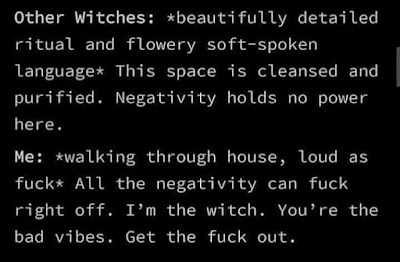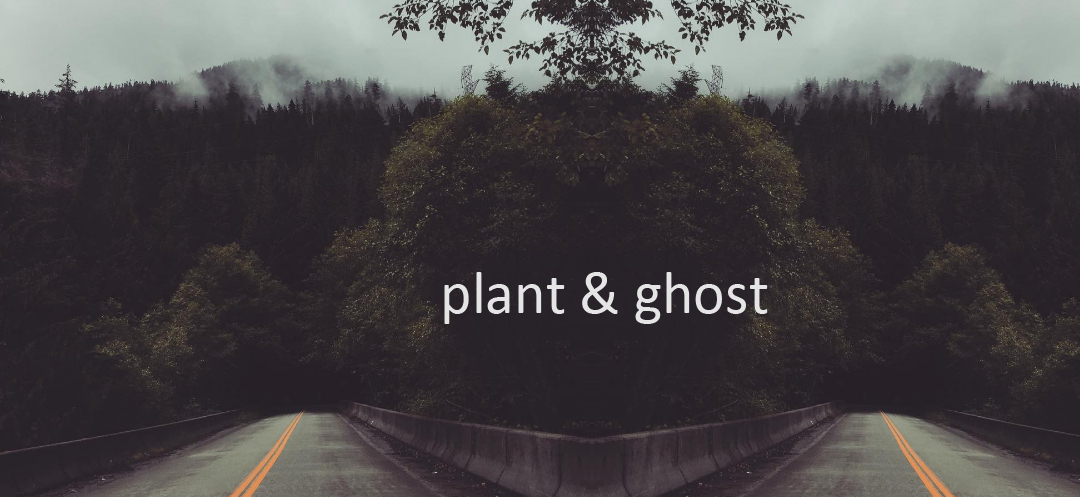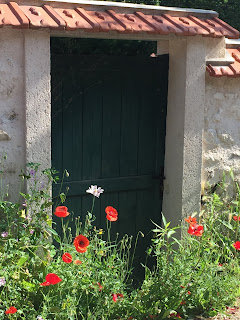Today is our only full day in France, and we're going to see as much of it as we can. Kae has booked us a bus tour of
Monet's gardens in Giverny, as well as a trip to
Versailles to see the famous palace. We get up very early and walk the crooked, deserted streets, crossing the Louvre's courtyard. We walk very near the
Arc de Triomphe du Carrousel, and through the haze can make out the Arc de Triomphe de l'Etoile in the distance. We don't stop- the tour bus leaves promptly at 8:00 am.
 |
| Tour Eiffel in the far distance. On the way back from Versailles Kae woke me up just as we drove right next to it so I could see it up close. |
 |
| This statue of Voltaire had been defaced with red paint and the words VOLTAIRE FUCK |
 |
| Statue guardian on a bridge over the Seine |
 |
| Entering the Louvre's courtyard |
 |
| The Louvre |
 |
| Ho. |
Our tour guide is a lovely, petite French woman named Aurielle; her coworker will repeat the same information in Spanish for the few Spanish-speaking visitors on the tour. Aurielle tells us we can identify her in the crowds if we "look for my beautiful orange flag with the
fleurs." Actually, it's a
hideous orange print from the 1970s, but at least it's easy to find in a sea of other tour guide flags. She has a great voice, and almost perfect command of English. The only mistake she will make is when she tells us we will be able to see Monet's famous chickens. She laughs and then corrects herself, saying she means "kitchen," and that she gets those words confused. When Kae and I visit, we do, indeed, see chickens.
Claude Monet is one of history's most famous painters. Born in 1840, he founded the
Impressionist movement; and together with his friends Renoir, Pissaro, Courbet, and Sisley eschewed the formal and traditional
salons that "real" artists sought to exhibit through to instead create independent exhibitions. The term "Impressionism" was coined after Monet's 1872 painting
Impression, Sunrise which depicts a wonderfully splotchy and non-literal harbor scene in cool blues, dotted almost dead-center with a red-orange sun. Unlike the formal and figurative works before them, impressionist works sought to capture the mood, the feeling, the colors, and perhaps the energy of a scene without being bogged down in details or realism. They chose real subjects, painting
en plain air instead of from references or memory. They used pure, bright colors, and bold strokes of brushes and palette knives.
I don't have a favorite Monet painting. Maybe like the genre itself, I love the colors, the dreamy focus and the mood of his paintings, but I don't hone in on a single detail (or favorite, in this case.) I like a lot of them, but don't really love one of them. If I could own any Monet painting, though, it would be
Grainstacks in the Sunlight, Morning Effect from 1890, but I would want it to have the slightly different composition of
Stacks of Wheat, End of Day, Autumn. The colors in Morning are better, but the smaller haystack on the left really bothers me- it's too close to the edge of the painting and makes me anxious for some reason.
 |
| I've seen the original of this painting at the Museum of Fine Art in Boston- they have a large Monet wing. Being inside the wing of his paintings feels like being held within a pastel Easter egg. |
 |
| See? Better composition. That small stack isn't trying to sneak off anywhere. |
It's beautiful here in Normandy. The fields are gently broken up by low trees. Kae and I alternate sleeping with talking about her ex-husband and my ex-wife. We compare battle-scars in a land that has endured battles much worse than our divorces.
Aurielle talks about the seedier elements of Monet's personal life: about his supposed affair with a family friend named Alice, who he eventually married after the death of his first wife Camille, and Alice's estranged husband. Monet had been living with Alice (and her 6 children, and his own two sons by Camille) for several years in 1883 when, on a train between Vernon and Gasney, he looked out the window and was enraptured by the pastoral beauty of Giverny in Normandy. That year they began renting the house that Monet would eventually buy in 1890. He spent over 40 years of his life here in this house, fussing over his gardens and painting.


Finally, we arrive in Giverny, first cutting through the little town. I look out the window and down to the grasses pushed up against the road. I see a small black form dart, and the weeds ripple: a mouse, or perhaps a martin has dashed away from our bus. We pull into the parking lot across from Monet's estate, and as a group walk through a tunnel under the road to pop up like a little group of groundhogs on the other side. Aurielle checks us in through a gate, and first shows us Monet's garden. For a garden that looks effortlessly wild, Monet put so much thought into plantings, placement, seasons, and color. He planted a variety of bulbs and seeds, and in such a way that the blooms would appear from early spring to late fall, so he always had a variety of seasonal flowers to reference. And he planted in blocks of color: this patch in pink hues, and another in yellows. We see his
famous rose-way, that walk of high-arching trellises for his roses to climb - his yellow house and its green shutters in the distance.
 |
| It's too early in the season for the roses to have covered the trellises in the rose-way |
Being here makes me think of so many of the women in my life. Of my mama, who is a plant witch even if she doesn't know it, who turns our front porch into a riotous oasis every spring. Of
Maggie, who I think must be a fae-folk, with her enchanted garden and ability to capture the fragility of flowers and fleetingness of light in both film and paint. Of Desiree, my sister-witch, who quietly infuses every room she enters with color. Of Liz, who bought a print of Monet's water lilies to beautify the girls' dressing room of our high school theatre. Of Kae, who I so desperately wanted to be my sister in law, and who I can't stop loving even if she broke my brother's heart. Time is a color here, and it has a weight.
Aurielle takes us to Monet's incredibly famous water garden. After about 10 years in Giverney, Money was able to buy the land across the road from his house. He dug a pond (which he would later enlarge) in irregular shapes and curves inspired by his love of Japanese art and design.
It looks just like the paintings: winding, overhung with plants crowded right up to the edge of the water. Huge patches of lily pads float on the surface, but I only see a single flower bud here and there. The garden is full of visitors, of course, even this early in the day. The paths around the pond are narrow, but people still stop dead in the middle of them to take photos. You have to constantly watch out for selfie sticks being swung around by idiots tourists. I try to remember that everyone here is just wanting to make memories, to have the experience they want, and that my wants aren't more important than theirs. But mostly I just want to shake half of them because I think with about 10 percent more consideration on their part, 100 percent of us would have a better time here.


After Aurielle is done talking about the water gardens, she releases us for about an hour to explore by ourselves. It's not nearly enough time to see everything, especially with the long lines beginning to form already to explore Monet's house. Kae and I cross the road back to the Clos Normand (the flower garden by his house) and walk up a few rows. We debate going into his
home to see the quirky interior, including his famously
yellow dining room and
blue sitting room. The lines are out the door and down the porch though, and we'd rather be outside or at least moving. We walk through the far end of the garden together, and find the chickens (not kitchen) Aurielle told us about. Their soft chortling clucks are comforting. I have to use a bathroom, and the restrooms we find end up being my first experience with a Turkish toilet. It's a modified pedestal squat toilet, but still I have no real idea how to use it. I wonder how elderly or mobility disabled people use these.


We go through the gift shop, full of anything that would hold still long enough to print a Monet painting onto. Umbrellas, china, towels, stationary. I buy postcards, and we try to buy water from a vending machine but it's broken. We have enough time to walk down a small country road that runs behind Monet's grounds. We talk about coming back here, staying in a small B&B along this road, walking the town at our own pace. A dog follows us along his entire fenceline, barking. Poppies, gladiolas, and other flowers bloom against pale walls.
 |
| Escargot |
We have to get back on the bus because we're heading to lunch. Our destination is a short ride:
Le Moulin de Fourges. The grain mill was built in 1790, in the architectural style of Marie Antoinette's provincial hamlet. It's absolutely beautiful - we walk across a wide drive, over a bridge that spans the small river powering the mill. The mill ground grain until the Industrial Revolution, when it fell into disuse and disrepair. In 1946, a young man fell in love with the property and turned it into an inn, and in the last 2 decades the mill has seen greater restoration and renovation projects.
 |
| A panorama showing the main waterway, spill gates, and mill |


The tour group is dining together in the restaurant, a large building with low ceilings and wood beams. Kae and I make a bee-line for a back table in the corner, but we're quickly joined by a family, a couple, and a woman traveling alone. The couple and woman are from South America, and they are very patient as I pull up as much high school Spanish as I can to pass them the water, the bread, and ask if they enjoyed the garden. The family is from Texas: a mom, her two pre/teen daughters, their grandmother, and grandma's "new boyfriend." Apparently they started dating only a short time before the family took this trip, but he came with. He and the grandmother seem nice. The mom makes a big deal about her daughters being surly, but I think they're just being teenagers. They're young, in a country where they don't speak the language, and hanging out with inscrutable adults who they likely equal parts want to impress and kill. No skin off my ass if they want to play on their phones or just sit quietly at lunch.
It's the mom of the group who, by the end, I wouldn't mind pushing in the Seine. She talks over everyone, in a sweet "I'm showing you I know what you mean!" kind of way that really just brings the conversation back to her. She makes a big fuss about her girls not liking the traditional food we're offered (hey, I get it, I don't dig on a lot of ingredients either, but I'm not telling our server that.) Kae makes best friends with the staff immediately, both because she speaks French and because she's charming as fuck. Kae gently, apologetically reminds them she ordered a vegetarian option, and they are happy to bring her one. Texas mom purses her lips and harangues the staff until they bring the same for one of her daughters, who looks to be quietly dying of embarrassment.
But what really makes Kaelah and I hit each other under the table and cough uncomfortably is when the mom starts talking about college. Kaelah is going to grad school in Texas, so she tries to relate to the family on that level, talking about cities they've all been to and the schooling system. Fine. The mom starts talking though about how hard it is for her daughters to get into college in Texas, because apparently Texas colleges reserve a certain portion of seats for "minorities." And as the mom goes on to say, her daughters get top grades and participate in all kinds of special after school activities, but they have less of a chance of getting in to a top school because some of those seats that should be for high-achieving kids are, well...reserved for kids who don't achieve as much as her daughters. Not fine. I think we leave the table after suggesting her kids try for colleges closer to their summer home (but not before I eat both my and Kaelah's desserts.)
We walk across the bridge and back to the bus. I get so motion sick, I can barely hold a conversation with poor Kae, and have to keep my eyes closed while we drive. Aurielle tells us more about our next and final destination of the day, the place I've most wanted to see today: Versailles. You'll have to read Day 2, Part 2 for that.


































